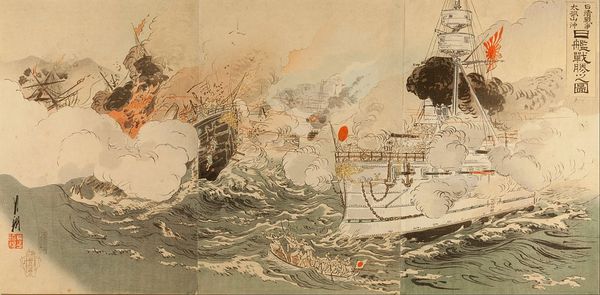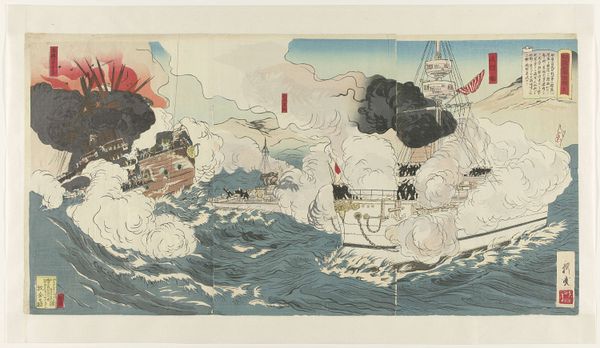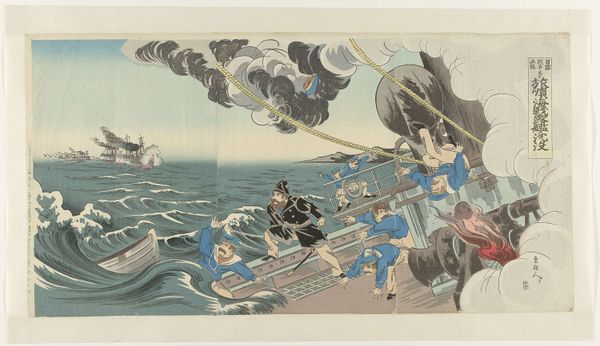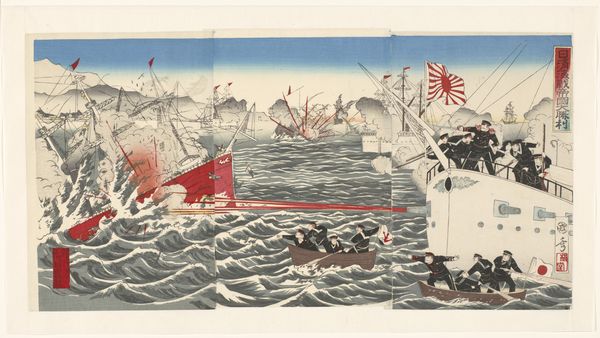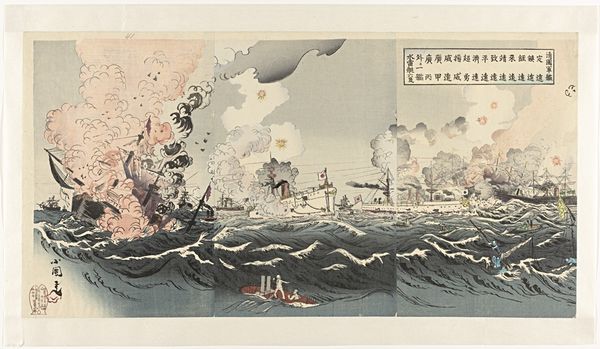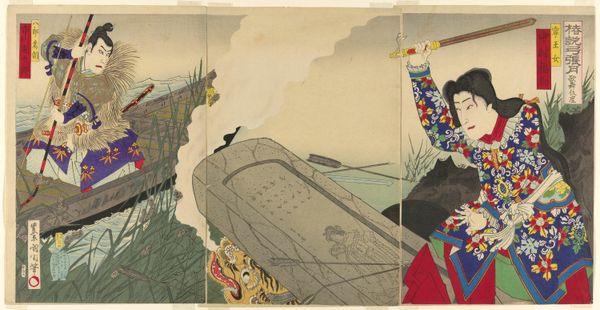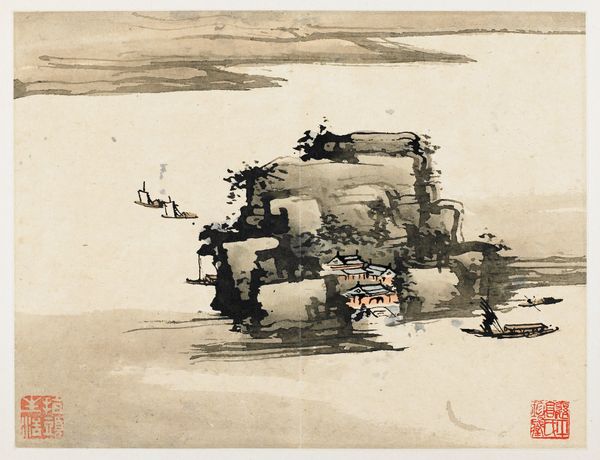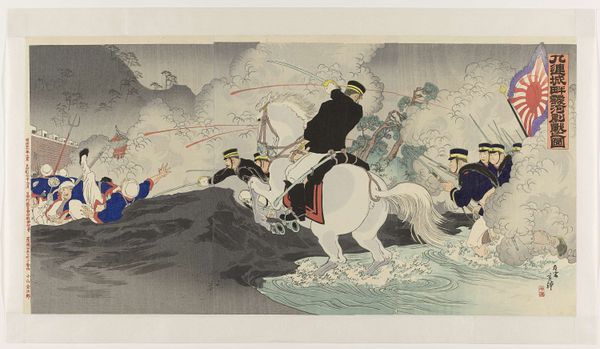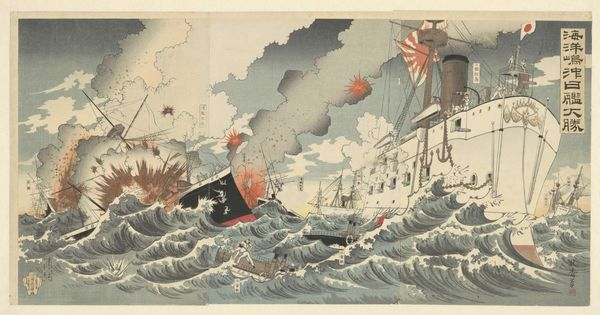
Dimensions: height 365 mm, width 725 mm
Copyright: Rijks Museum: Open Domain
Curator: Well, this woodblock print certainly explodes with drama, doesn't it? The sheer energy conveyed through the lines and colors… it’s quite compelling. Editor: Yes, a suitably bombastic illustration. We are looking at “The Japanese Navy Destroying Chinese Battleships Near Dagushan,” by Ôkura Kôtô, from 1894, found here in the Rijksmuseum’s collection. It depicts a scene from the First Sino-Japanese War. One wonders about the intended audience and the impact of such a scene on public sentiment at the time. Curator: The dynamism is primarily achieved through the strategic use of diagonal lines, particularly in the depiction of the waves and the trajectory of smoke and explosions. The color palette, limited as it is, effectively contrasts the dark hulls of the ships against the billowing white smoke. It almost creates a sense of sublime terror. Editor: Indeed, the deliberate choice to foreground the modern Japanese fleet decimating what must have been perceived as antiquated Chinese vessels broadcasts a powerful political message. The image would have reinforced a narrative of Japanese strength and modernization at the expense of China’s declining imperial power. Consider, also, the propagandistic function inherent in selecting such a victorious event for depiction. Curator: Agreed. I find the composition particularly striking. The artist uses a triptych format, a set of three panels that provide breadth while emphasizing the linear perspective, leading the eye to the vanishing point behind the fray. Editor: That multi-panel approach amplifies the narrative, immersing the viewer in the event. It echoes traditional Ukiyo-e while serving a very modern purpose. The depiction of warfare was used to shape and manipulate public perception of Japan's emerging role in global affairs, making the scene much more than mere illustration. It provided validation for Japan’s ambitions within a socio-political milieu. Curator: Ultimately, the brilliance lies in Kôtô’s mastery of the medium. He managed to create such a gripping and emotionally charged composition out of simple woodblocks and ink. It stands as a testament to the evocative potential within limitations. Editor: An evocative power rooted in strategic messaging, used for bolstering public image and imperial authority—a testament to art's inherent entanglement with historical forces. Curator: Yes, a perspective that is undeniably vital when engaging with the history of aesthetics. Editor: Precisely. A synergy well illustrated in considering works such as this one.
Comments
No comments
Be the first to comment and join the conversation on the ultimate creative platform.
